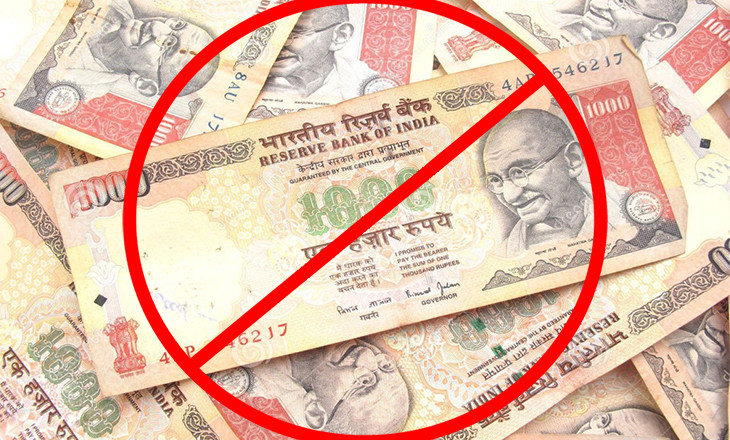Country plans to fight counterfeiting by replacing old bills with new 500- and 2,000-rupee notes
In a swift move, Indian Government demonetized High Denomination currency with immediate effect. The move encourages citizens to get digitally empowered and go for cashless transactions.
The new 500- and 2,000-rupee notes, worth around $7.50 and $30 respectively, will begin to circulate soon. Current 500- and 1,000-rupee bills ceased being legal tender Wednesday but can be redeemed at banks and post offices until December 30, 2016.
Banks will be closed all Wednesday to help make the transition. According to India’s central bank, 86.4% of the value of all rupee bills in circulation was in 500- and 1,000-rupee notes as of March.
Sujan Hajra, chief economist at Anand Rathi Securities in Mumbai, commented:
It’s going to be very inconvenient, because everybody uses these notes. But given the amount of fake cash in India, it’s a very good move.
Governments around the world have debated the merits of scaling back big bills to fight crime. The European Central Bank began phasing out the €500 ($552) note this year. India’s Ministry of Finance said that because the new rupee notes will look markedly different from current ones, the move would deal a blow to activities such as terrorism, drug smuggling and espionage that fake Indian currency helps finance.
The country’s central bank said 405,000 counterfeit 500- and 1,000-rupee notes were found in the banking system in the year that ended in March, representing around $4 million. But researchers at the Indian Statistical Institute estimated this year that the total value of fake bills in circulation, including those that go undetected by banks, may be as high as $60 million.
This parallel economy has got to go,” said Shaktikanta Das, the secretary for economic affairs in the finance ministry, noting that the increase in circulation of high-denomination rupee notes had outpaced the economy’s growth over the past five years.
